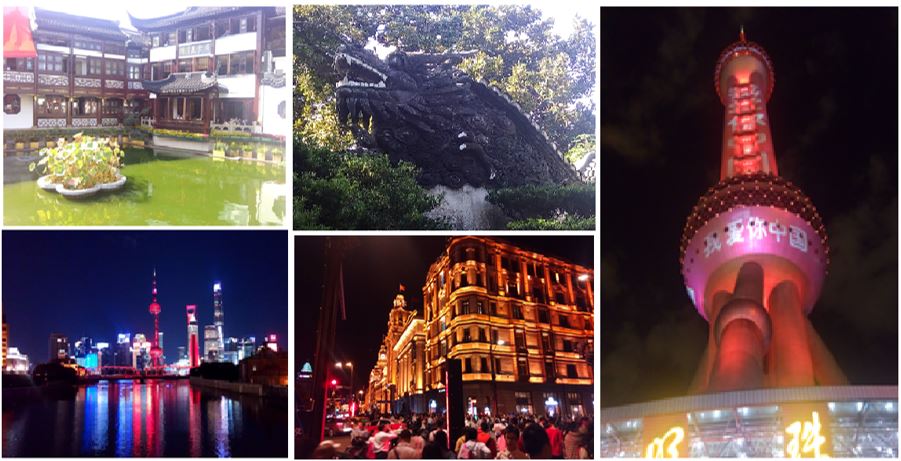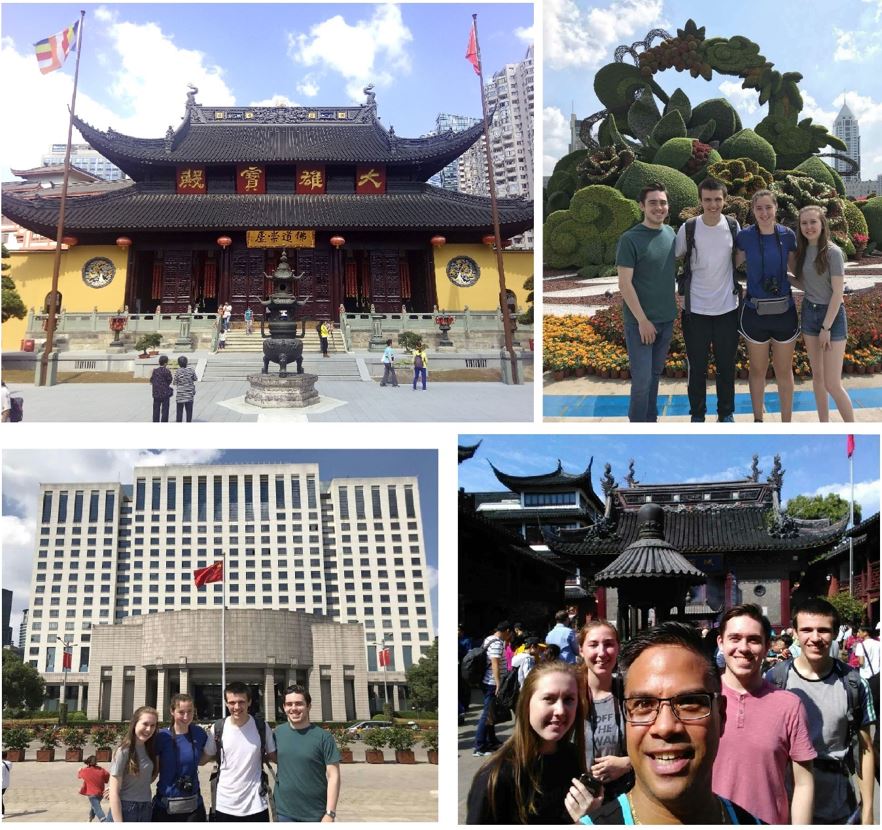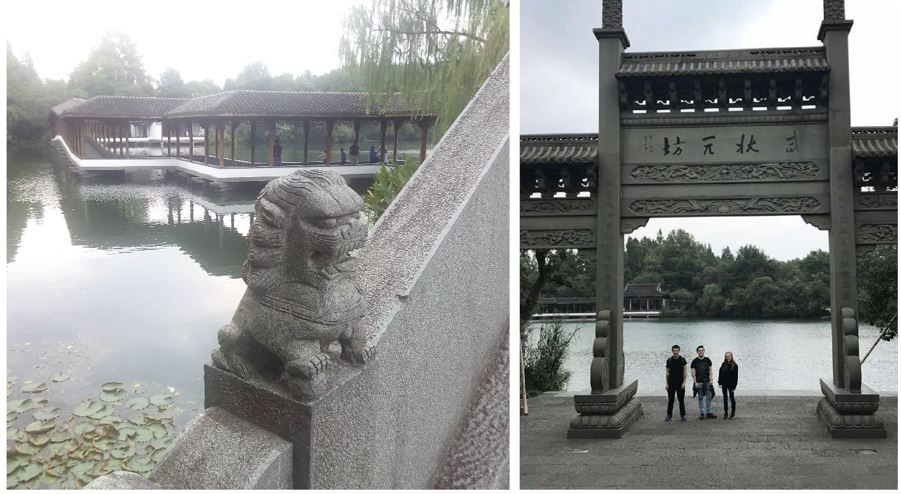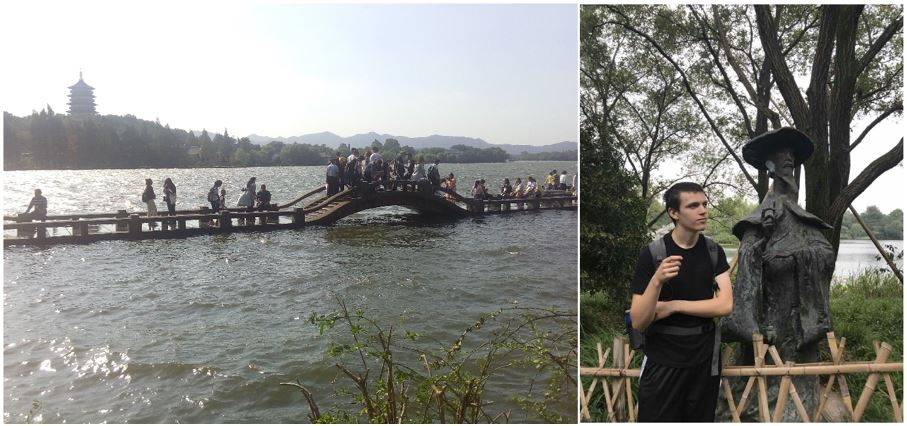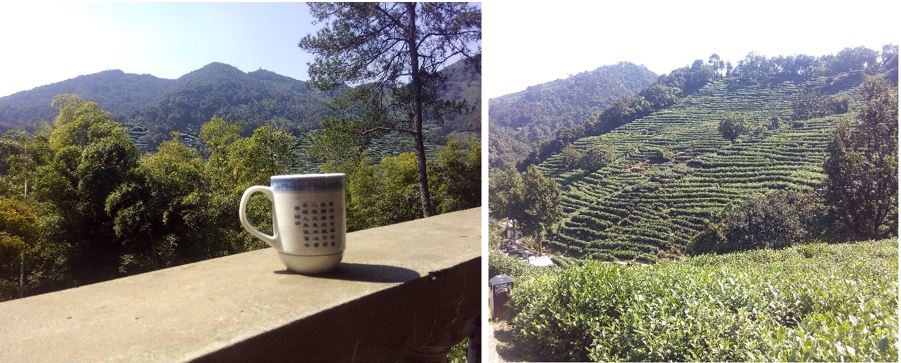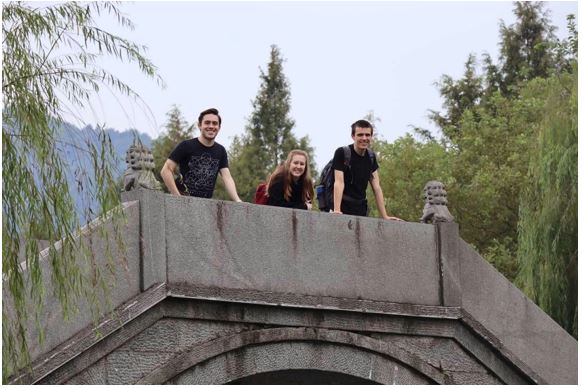Exploring the East
Bonjour tout le monde! Ça va bien? We’re two months in already, and with every passing day China is becoming less and less foreign. Having had more time to soak in the environment around me, I’ve noticed my character changing in small and subtle ways as I steadily pick up the Chinese way of life. I’ve adjusted more to savoury and spicy foods, I now prefer drinking water hot rather than cold, and I’m a far more confident cyclist, weaving through the chaotic morning traffic to class every day.
Shanghai
One highlight of this month was taking a week-long holiday to celebrate the founding of the nation 70 years ago. On the first day of the month (after unfortunately attending class on Saturday and Sunday) I set off with three other scholars on a journey to China’s Eastern coast.
To be honest, our first experience of a Chinese train was pretty gruelling. Since we didn’t book seats, we found ourselves standing in the crowded aisle, completely immobile between the countless legs and shoulders. For some time, we managed to lie down across the aisle with our heads and legs beneath the seats either side. This meant we could get a minimal amount of sleep, until the trolley lady came trundling down the aisle, shouting the evening menu. Interacting with locals, however, did make the experience more interesting, and they were often willing to share their food, add us as friends on WeChat and enthusiastically practise their English at 5 o’clock in the morning.
After 17 hours we finally arrived in the buzzing metropolis of Shanghai. The first thing which struck me about the city was the greater Western influence. In Tianjin white people are quite scarce, however in Shanghai we found them at almost every street corner. The brands, fashion, cuisine and architecture around the city were noticeably more Western, almost giving the atmosphere of an American city. It was even sometimes a struggle to find traditional Chinese food – once when we were searching for lunch we ended up eating at a patisserie for lack of finding anywhere cheaper.
We saw the city’s older sites, such as the pleasant brooks, trees and traditional architecture of Yu Gardens and the quiescent courtyards of Jade Buddha Temple, then explored the city’s modern side in places like the imposing People’s Square and the dazzling electric skyline along the Huangpu River. Everywhere in the city we went we were accompanied by a solo-traveller from Chicago named Eric, who was staying at our hostel. He was very enthusiastic about the sights in the city, which made the trip more enjoyable. He even bought us all ice cream at the foot of the Oriental Pearl Tower – a very nice touch after a long day walking!
Shanghai was the second city I’d seen in China, and it offered an interesting new facet of China to look at – a rich, shiny, high-flying and futuristic side of China, which isn’t so easy to see in a laid-back city like Tianjin.
Hangzhou
Two days later we set off for the city of Hangzhou a few miles south. Hangzhou is renowned for its natural beauty, including mountains, lakes, forests and tea fields, which has inspired Chinese poets and artists for centuries. It wasn’t difficult for us to see why.
Our first hour there was rather stressful, as the bus from the train station dropped us off at the wrong side of the city and no taxis stopped for us, so we eventually gave up and went to our hostel by bike, using the Chinese bike-sharing app Mobike. However, things only got better from then on as we realised what a quiet, relaxed and beautiful place Hangzhou was. I remember my surprise cycling down a street surrounded by trees and greenery – it felt bizarre to be in a Chinese city filled with plant life, rather than high-rise buildings and traffic jams in all directions. It was very pleasant to smell the forest wherever we walked, and it brought back memories of family walks in the woodlands when I was young.
The first day we spent strolling around the banks of the West Lake, enjoying its still waters, willow trees, forest paths, waterlilies, pagodas and stone bridges. Occasionally we stumbled across a statue, museum or memorial honouring a hero of Chinese history, and once even came across a contemporary Chinese art museum. It was easy to lose track of time wandering around the peaceful gardens, watersides and woodlands – I felt I could almost relate to the countless poets and philosophers who had walked in those places before us!
The next day we visited Longjing tea village, a relaxed little settlement a short walk from the city, surrounded by hills and tea plants as far as the eye could see. Some of the best green tea in China is grown there, and the locals certainly knew how to sell it, approaching any passer-by on the road saying “Tea? Tea? You want tea? Follow me.” Eventually we gave in to one of these salesmen and spent the afternoon on a balcony overlooking the hills, drinking locally-grown green tea and playing cards.
Our last evening we spent exploring the city itself and joined in with a group of old ladies dancing to disco music on the street (a common sight in China, known as “guǎng chǎng wǔ” – “public square dance”). We started off very awkwardly trying to mimic the dancers around us, but with some guidance from an old lady beside us we soon got the hang of things!
Overall Hangzhou was the most tranquil, laid back and picturesque place I’ve ever seen in China, and provided some rest from busy student life. We could all see ourselves retiring there one day! I also found it interesting to hear locals speak Mandarin with a different accent than in Tianjin, often pronouncing “sh” sounds as “s” sounds. Once I’m sure I heard some locals discussing the nearby city of “Sanghai”.
Despite the fun we had on our first holiday as residents in China, it is good to be back in Tianjin with a regular daily routine and catching up with the other scholars. Even in ordinary life, new and interesting things are happening here each day. Things haven’t been problem-free, and we have had quite a few bumps, challenges and confusions along the road, but in all honesty, I couldn’t be more thankful for the life I’m living now. Every day I meet and talk with fascinating people, I learn so much more about the culture around me and I am growing as a person in new and exciting ways.
À plus tard!
麦亚伦
Arran
P.s. De la matière à réflexion
Quand nous étions à Shanghai, nous avons visité un grand marché. Ça a semblé vraiment comme un labyrinthe de stands sans fin, où on pouvait acheter n’importe quoi: des chemises, des chapeaux, des foulards (n’importe quels vêtements), des couvertures, des portables, des ordinateurs, des cables (n’importe quel dispositif électronique), des sacs, des bouteilles thermos, des peintures, des souvenirs chinois, et encore plus. Dans ce type de marché, il est très normal de marchander avec les vendeurs. J’ai acheté une bouteille thermos là bas. D’abord, le vendeur m’a dit qu’elle coûte 120 yuan. J’ai répondu, “Tài guì le!” (“c’est trop chère!”). Ensuite il m’a dit qu’elle coûte 110 yuan. J’ai proposé un prix de 50 yuan, mais il n’etait pas d’accord. Alors j’ai proposé un prix de 70 yuan, et après avoir marchandé un peu plus, enfin il a souri et m’a dit “70 yuan est bien”.
In China this type of haggling is very common, and sometimes even expected. What I’ve found funny about this haggling is that it isn’t regarded as devious or greedy at all, but rather is treated like a playful game. How would you guys feel about haggling? Would you be totally up for it or would it be quite uncomfortable? Would you prefer having fixed prices, even if it meant paying a little extra?
